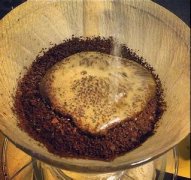Espresso Common sense the characteristics and Development History of Italian espresso

Introduction to Italian espresso
Italian espresso is what people often call Espresso. Espresso is an Italian favorite and can be counted as the starting point for any delicious fancy coffee. They are willing to have a hot Espresso at any time of the day. Adults also add a dash of Italian grappa to the glass to make Caffe Corretto. Today, espresso coffee has become a favorite all over the world, and it is also the basic ingredient for making fancy coffee such as cappuccino.
The origin of Italian espresso
In the 1930s, an Italian named Gorggia invented a machine for brewing espresso coffee. He also invented this unique method of brewing coffee, which allows hot water to pass through coffee powder under great pressure. Due to the use of the name "espresso," espresso coffee is often thought of as caffeine-rich coffee, leading to concerns that it is harmful to the body. But in fact, because the longer roasting process has caused the coffee beans to lose many irritating components, and the short water, it is impossible to make all the caffeine in the coffee dissolved in the water, so Espresso can be said to be more harmless than ordinary coffee.
Characteristics of Italian espresso coffee
The most important sign of a good espresso is that it has a light camel-colored Crema on the surface, which is a mixture of fat, water and air in the coffee during the extraction process. The emulsion should be uniform in color and about 3 cm to 5 cm thick. Shake the coffee cup gently. This emulsion will stick to the wall like thick syrup. If the emulsion is dark brown or even black, it indicates that the coffee has been extracted too much; if it is light yellow, it indicates that the coffee has not been fully extracted.
Important Notice :
前街咖啡 FrontStreet Coffee has moved to new addredd:
FrontStreet Coffee Address: 315,Donghua East Road,GuangZhou
Tel:020 38364473
- Prev

The characteristics and History of the Common sense of fancy Coffee Macchiato (Macchiato)
Caramel Machiatto, the origin of the name Macchiato, is the name of Macchiato. Caramel means caramel in English, while Machiatto means imprint in Italian. As the name implies, its name caramel macchiato symbolizes the sweet mark. The characteristics of macchiato (macchiato) coffee
- Next

Italian coffee fancy coffee common sense the characteristics and origin of latte coffee
Latte coffee is a classic blend of Italian espresso and milk. Italians also like lattes as breakfast drinks. In the Italian kitchen in the morning, coffee and milk are usually made on the sunlit stove at the same time. Italians who drink lattes prefer espresso to milk rather than espresso, only esp
Related
- Beginners will see the "Coffee pull flower" guide!
- What is the difference between ice blog purified milk and ordinary milk coffee?
- Why is the Philippines the largest producer of crops in Liberia?
- For coffee extraction, should the fine powder be retained?
- How does extracted espresso fill pressed powder? How much strength does it take to press the powder?
- How to make jasmine cold extract coffee? Is the jasmine + latte good?
- Will this little toy really make the coffee taste better? How does Lily Drip affect coffee extraction?
- Will the action of slapping the filter cup also affect coffee extraction?
- What's the difference between powder-to-water ratio and powder-to-liquid ratio?
- What is the Ethiopian local species? What does it have to do with Heirloom native species?

